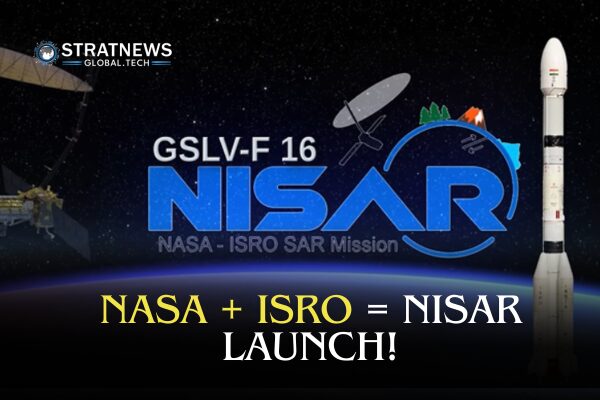India’s space agency ISRO has announced that the NASA-ISRO Synthetic Aperture Radar (NISAR) satellite will be launched on 30 July 2025 at 17:40 IST from the Satish Dhawan Space Centre (SDSC SHAR) in Sriharikota. The announcement, shared by ISRO on 22 July 2025 through its official channels, marks a significant moment in international space collaboration as this satellite represents the first joint Earth observation mission between ISRO and NASA.
The satellite will be launched aboard ISRO’s GSLV-F16 rocket, which will inject it into a Sun-synchronous orbit at an altitude of 743 kilometres, with an inclination of 98.40 degrees.
NISAR is a state-of-the-art Earth observation satellite weighing 2,392 kilograms. What makes it particularly unique is its combination of dual-frequency Synthetic Aperture Radar systems: NASA’s L-band radar and ISRO’s S-band radar, both mounted onto NASA’s sophisticated 12-metre unfurlable mesh reflector antenna.
This assembly is integrated onto ISRO’s modified I3K satellite bus. Using SweepSAR technology for the first time, NISAR will survey the Earth with a swath width of 242 kilometres while offering high spatial resolution imagery.
The satellite is designed to provide comprehensive, all-weather and day-night monitoring of the Earth’s surface. It will revisit and scan the entire planet every 12 days, delivering data that is critical for a wide range of scientific and practical applications. Capable of detecting even subtle changes in the Earth’s surface, NISAR will track ground deformations, glacier and ice sheet movements, and shifts in vegetation patterns.
Beyond these, it will support applications such as sea ice classification, ship detection, shoreline monitoring, storm tracking, monitoring soil moisture variations, surface water mapping, and providing vital data for disaster management and emergency response.
This mission is the result of over a decade of collaborative effort between technical teams from ISRO and NASA’s Jet Propulsion Laboratory (JPL).
According to ISRO’s statement, the NISAR satellite represents a technological milestone and symbolises deepening ties between India and the United States in the field of space exploration. The data gathered by NISAR will play a critical role in resource management, climate change studies, and enhancing global disaster preparedness in the years to come.


